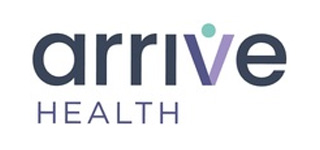The vast potential and sudden interest in generative AI technology has brought health care innovation to a crossroads. Although this technology is still in its infancy, it’s already becoming critically important for health care executives to understand the nuances and potential of this cutting-edge technology and its specific applications within the health care space.
For the past several months, the members of AVIA’s Generative AI Collaborative—including AI experts and nearly 30 leading health systems like Geisinger, Providence, and Cedars-Sinai—have been working to unravel the potential opportunities and use cases that generative AI presents to health care, while paving the way for broader adoption. Drawing on AVIA’s in-house expertise and the collective knowledge of participating health systems, here are several key things that every health care executive should know about generative AI.
AI Will Transform Health Care
Health care has a reputation for needing to be faster to adopt technology and for struggling to realize that value even once adoption has occurred. Health care is the only major US industry where productivity has decreased, rather than increased, with the adoption of new technology. But with AI, something very different is happening. First and foremost, the level of interest from health systems has been unprecedented, and the solution landscape has blossomed with up-and-comers and early but still promising opportunities.
Numerous collectives and organizations have also been created, including The Coalition for Healthcare AI (CHAI) and the National Academy of Medicine’s (NAM) AI Code of Conduct Steering Committee, as well as AVIA’s own Generative AI Collaborative, which has grown to include 29 leading health systems. The US government has also issued a series of new announcements and statements throughout the year, including a pair of White House memos in October and December that underlined the critical role of, and interest in, health care AI. While clear use cases and best practices are still being collected and tested, it’s been the most overwhelming shift in healthcare technology since COVID-19 forced the rapid adoption of telehealth programs like virtual visits.
AI Serves an Immediate Need
AI has enormous potential in the future, but the biggest upside of health care AI is its ability to address the biggest problems health care faces today, like labor cost structure and productivity. In the near future, AI will play a crucial role in eliminating administrative and clinical documentation burdens that can consume as much as 15 hours a week of health care professionals’ valuable time, both taking them away from the essential work of interacting with patients and also making each patient interaction take longer and consume more resources.
Administrative tasks, such as paperwork, appointment scheduling, and billing, are all ripe for automation and the use of AI to generate pertinent information, not only improving the overall workflow within health systems but also contributing to a reduction in operational costs and the creation of new capacity from existing resources. AI promises a more responsive and scalable health care system that can better meet the growing demands of an increasingly complex and dynamic patient population. AI will also make it possible for health systems to completely transform the cost structure across a wide swath of the health care system, from inpatient and emergency care to ambulatory and urgent care clinics.
A Market for AI solutions is Still in its Early Stages, but it is Rapidly Expanding
AI enablement requires consideration for 3 key components: data, model, and computation. How organizations source these elements will be predicated on the targeted use case and whether the organization sees itself as a “taker”, “shaper”, or “maker” of AI.
All health care organizations will ultimately become “takers” of AI solutions, either purchased or created in partnership with third-party companies. Some will become “shapers”: ones that build custom use cases with purchased solution companies. Even fewer will be “makers,” and build their own AI models and solutions. We have already seen this play out with predictive AI and Machine Learning, and we expect similar segmentation when it comes to Generative AI (although the near term will be more “takers” and “shapers”, due to the inherent difficulty of developing large language models from a cost and computational standpoint).
Based on these three archetypes, organizations can look to three distinct areas of the market for AI capability acquisition: Big Tech/EHR partners, Digital Health Solution Companies (use case or segment-focused), and Digital Health Solution Companies (AI Enablers).
In the current state, large tech players like Microsoft, AWS, Google, and Oracle are using their market power in cloud computing and storage to position AI-enabled products and features, offering the first true opportunity into an array of Gen AI and other AI-enabled products. The proliferation of digital health solutions with AI-enabled products also continues to see high investment and funding, focusing on a few critical areas that other technologies have failed to solve, including use cases in clinical documentation, conversational chat, and clinical use in Radiology/Cardiology. Lastly, a new technical infrastructure stack is making its way to the market to support “maker” organizations as IT infrastructure moves from data storage/retrieval to data inferences and automatic actions. These companies will continue to lower the barrier for organizations to become “makers” to address model development issues, compute cost, and data quality.
AI is for Today, Tomorrow, and Far Beyond
AI isn’t the type of technology that is a “one shot” deal—largely because it isn’t a capability, but rather a dramatic expansion of many different capabilities, some of which likely won’t materialize for many years.
In the near term—the 6-to-12-month window—look for AI adoption in areas where it can begin to automate existing manual tasks like clinical documentation, scheduling, and billing. These areas have ready-made use cases in which a measurable impact is reasonable to expect in the short term. Looking further out, over the next 1 to 2 years, expect to begin seeing more AI adoption in areas that augment existing human workers and capabilities: these include generating synthesized summaries and diagnostic insights, treatment recommendations, and conversational chatbots that will interact with staff and patients.
Finally, in the longer term—in the 3-to-5-year time scale—look for AI solutions that emphasize creating entirely new solutions that will directly interact with patients in clinical care and become ubiquitous to the care delivery experience. AI systems have the unique ability to recognize novel patterns that might otherwise go unnoticed by humans, make creative connections between existing pieces of data, and design new products and services whose development will be predicated on sufficient investment and the right level of regulation not to stall innovation, enabling the realization of the transformational impact forecasted across the industry.
Risks Remain—But it’s Time to Build
Health care AI represents an unprecedented opportunity to revolutionize patient care, streamline operations, and enhance overall efficiency. It’s critical to acknowledge the risks and uncertainties that remain, especially the relative immaturity of the technology and market—but it’s equally important to recognize that the time for adoption is now.
Health systems that begin working to lay the foundations for serious AI adoption will not only stay ahead of the curve but also stand to lead the way in delivering cutting-edge, patient-centric care. The urgency of embracing AI in healthcare cannot be overstated. Those who ignore the opportunity will risk falling behind in a rapidly evolving landscape, missing out on the AI’s transformative potential for the future of health care.



